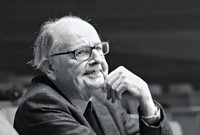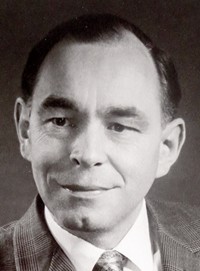Advertisement
Grab your lab coat. Let's get started
Welcome!
Welcome!
Create an account below to get 6 C&EN articles per month, receive newsletters and more - all free.
It seems this is your first time logging in online. Please enter the following information to continue.
As an ACS member you automatically get access to this site. All we need is few more details to create your reading experience.
Not you? Sign in with a different account.
Not you? Sign in with a different account.
ERROR 1
ERROR 1
ERROR 2
ERROR 2
ERROR 2
ERROR 2
ERROR 2
Password and Confirm password must match.
If you have an ACS member number, please enter it here so we can link this account to your membership. (optional)
ERROR 2
ACS values your privacy. By submitting your information, you are gaining access to C&EN and subscribing to our weekly newsletter. We use the information you provide to make your reading experience better, and we will never sell your data to third party members.
People
Claude S. Hudson Award In Carbohydrate Chemistry
Sponsored by National Starch
by Sarah Everts
January 24, 2011
| A version of this story appeared in
Volume 89, Issue 4

Richard R. Schmidt, 75, came to carbohydrate chemistry late in life—in the late 1970s when he was in his 40s and already an established professor at the University of Constance, in Germany—but that didn’t stop him from developing a method that revolutionized the synthesis of complex sugars. For this work he has won the 2011 Claude S. Hudson Award.
“This method has become the method of choice for the construction of glycosidic linkages even for the most complex carbohydrates,” says Peter H. Seeberger, a carbohydrate chemist and a director at the Max Planck Institute of Colloids & Interfaces, in Potsdam-Golm, Germany. “Chemists in this field refer to this class simply as the ‘Schmidt donors,’ and I don’t know of any of the accomplished players who have not used them.” Not surprisingly, Schmidt’s articles describing the method have been cited more than 1,000 times.
A Schmidt donor is a trichloroacetimidate group that is added to a hydroxyl group on a sugar as an anomeric activating group. Developing this activating method “revolutionized” oligosaccharide synthesis, says David R. Bundle, a carbohydrate chemist at the University of Alberta, in Edmonton. Prior to Schmidt’s development, other reagents were difficult to prepare and were very unstable, he says. With the newly developed methodology, Schmidt and his colleagues built a potpourri of complex sugars, many with important biological roles, such as the N-linked glycan chains on important proteins or glycosylphosphatidylinositol anchors for cell membranes, which are involved in cell signaling. “Many of the targets his group synthesized constituted landmark achievements that few groups today can contemplate undertaking,” Bundle adds.
Schmidt hails from the south of Germany. He says he chose to study chemistry in university over other temptations such as law, math, and physics “because I didn’t learn much about chemistry in high school, and I thought I should know more.” Initially the discipline did not appeal to him at all, particularly the analytical labs, but he came to love it. “Whenever you concentrate hard enough on a subject you will find that it can become very interesting,” he says.
Schmidt received a Diploma and a Ph.D. in chemistry from the University of Stuttgart in 1960 and 1962, respectively. Then he did postdoctoral work at Scripps Research Institute in La Jolla, Calif., before returning to Stuttgart to do a habilitation, which was then a prerequisite for a German professorship, and then launch his own independent career. In 1975, he moved to the University of Constance to take a position as a chaired professor of chemistry and biochemistry.
Initially, Schmidt did research in cycloaddition chemistry, which was “very popular” in the 1960s, he says. Then he moved on to study organometallic chemistry and nucleoside chemistry. The switch to carbohydrate chemistry came when he moved to Constance and discovered that another professor there was already active in nucleoside chemistry. To avoid competition at the same university, Schmidt turned his attention elsewhere. “I never was preoccupied with any given field of chemistry,” he says. Carbohydrate chemists can be thankful he directed some of his ample attention to advancing their field.
Schmidt will present the award address before the ACS Division of Carbohydrate Chemistry.





Join the conversation
Contact the reporter
Submit a Letter to the Editor for publication
Engage with us on Twitter